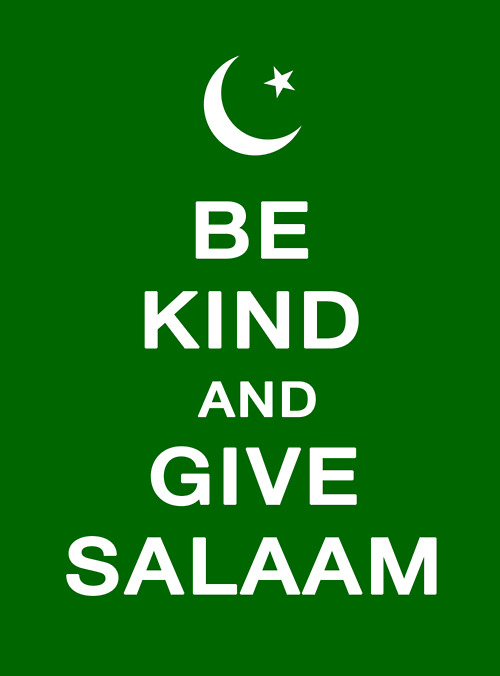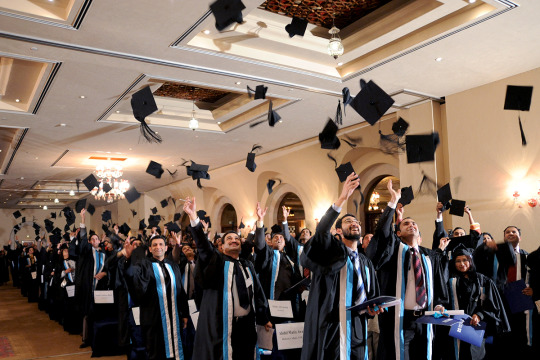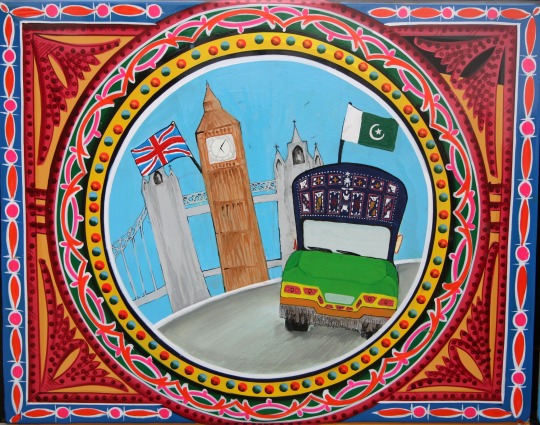Quote
"Want to win world titles and make Pakistan proud"
British boxer Amir Khan talks to the media while in Lahore making wedding preparations
5 notes
·
View notes
Text
Why small is big in Pakistan
By Chloe Cornish
The Fakir Khana Museum, a ‘hevaley’ housing a vast collection of eclectic artefacts assembled over six generations, is stifling in Lahore’s August heat. Unfazed by the rivulets of sweat coursing down his face, its owl-eyed curator is about to present one of his most precious treasures. “How long do you think it took to complete this miniature?” he asks, tenderly cradling a postcard-sized painting between bulky fingers. A month? Six maybe? The curator chuckles. “Fifteen years.”
Closer inspection shows what took so long: a portrait so life-like the tiny figure might just hop from the frame. A magnifying glass is the only way to appreciate fifteen years of work, revealing downy hairs around the man’s temples, delicate veins, gold-leaf manipulated to look like threads in a carpet, and individually rendered facets of jewels. For his pains, history has rewarded this skilled and committed artist with anonymity. His subject is preserved though: ruler of the state of Dijana, Nawab Mumtaz Ali Khan.
We have entered the microcosmic world of the miniature, the art of the Mughal empire. Impossibly detailed portraits and paintings of court life, miniatures were lavish entertainment for the rich and powerful, and a vital part of Pakistan’s artistic tradition. The National College of Art in Lahore has been teaching the rigorous process to a new generation, and today miniature is being reinvigorated by contemporary Pakistani artists. Preparation is painstaking. It takes around two weeks to produce special ‘wasli’ paper before painting can even begin. Then squirrel hair brushes, with two or three hairs in the tip, are used to layer detail. In ‘Moderate Enlightenment’ (works from which were shown at Modern Art Oxford in 2007), Imran Qureshi uses the serious court form, but injects wit, and the warmth of familiarity: people in jeans, a man working out with dumb-bells, gentlemen blowing bubbles, and a lady clutching a handbag. The artist’s eye has sought out the details of ordinary life to pore over, raising their importance to a level of attention once reserved for emperors.
Reapplying this tradition was controversial. Many felt that miniature ought to invoke historic splendour, not magnify every day issues or make political comments. Speaking out against the glorification of nuclear weapons by Pakistan, Qureshi depicted missiles (famously tested in 1998), surrounded by traditional miniature patterns. Celebration of destructive force questioned through this juxtaposition with delicacy, both form and content are a reminder of violent pasts garlanded as heritage.
Contemporary miniatures demand a closer look at Pakistan, a nation associated with tragic headlines. According to the British High Commissioner for Pakistan, the “vibrancy of its art and literature” is just part of what the Western media overlooks in Pakistan.
“There are positive things that we in the West tend to neglect…the openness of society and the media, the gradual strengthening of democracy after many years without it…the hope and commitment of so many good people to making things better. Just that possibility – of one step back but two steps forward – can make Pakistan really quite addictive. I love it.”
Teenager Mariya Kamran is at school in Oxford and grew up in Pakistan. She misses the “free will [and] fashion” of her homeland, and is “proud to bits” of her culture. Staring into the ferocious eyes of Nawab Mumtaz Ali Khan, it isn’t hard to see why.
#minitures#Fakir Khana Museum#Lahore#UK Pakistan relations#Mughal empire#National College of Art Lahore#Imran Qureshi#moderate enlightenment
0 notes
Text
Hal Bevan Petman
Henry Charles 'Hal' Bevan Petman, (1894-1980), was a British portrait painter who came to Indian sub-continent in the 1920s, and made it his home. Popular among the Indian Nawabs and Maharajas for his landscapes and portraits, Hal became a household name among the who's who of the day. At Partition, Hal and his wife Berylle opted for Pakistan, where he continued his work, till his death in 1980. Hal is buried in the Rawalpindi Christian graveyard.
See:www.halbevanpetman.com, and:
http://www.facebook.com/HalBevanPetman?ref=hl
0 notes
Text
Lahore and Chandigarh: Photographs document tale of two cities
The pictures, showing parts of Chandigarh and Lahore’s areas narrate the history of the two cities and highlight the parallel. PHOTO: ABID NAWAZ/ EXPRESS
About 200 photographs displayed at the Alhamra Art Gallery by UK-based artist William Titley focus on histories of Lahore and Chandigarh. The traveling exhibit, presented in an installation form, went on display on January 22 and will continue till January 30.
The pictures, showing parts of Chandigarh and Lahore’s areas around The Mall, the Walled City, the Fort and the Minar-i-Pakistan narrate the history of the two cities and highlight the parallel.
The display also has excerpts from Titley’s personal diary from the days when he was photographing the two cities about two years ago. Amina El-Edroos, a final-year Fine Arts student at the Beaconhouse National University, who attended a workshop given by Titley at the University of Central Lancashire along with two other BNU students, curated the show in Lahore.
The students attended the week-long exchange programme Inspire arranged by the British Council for art students from the BNU and the University of Central Lancashire in England in September 2012.
El-Edroos said Titley had then asked the three to curate a show for him in Lahore. She said he was planning to display his works at the Dubai Art Fair next, and then again in England. The works were displayed in Britain in September; in Houston and Texas in the United States in October and then in India in November 2012, she said.
There are many places in England with large populations of Indians and Pakistanis. More people would be interested in seeing the works there, said El-Edroos. She said her classmates Mohammad Ghulam and Tayyab Tariq had helped her in curating the show.
The works have been catalogued in “In between Lines – Lahore and Chandigarh”. They can be purchased from Amazon.com.
Risham Syed, a former Abraaj prize winner who also attended the sessions in England with her BNU colleagues, said in some pictures, it was really hard to make out where they had been taken. She said it was an open-ended narrative, leaving it to the viewers to interpret it, she said.
Amina, an NCA student visiting the exhibition, remarked: “The similarities in the architecture, the collaging of photographs and the black and white photography are suggestion.” Tanya Suhail, the Alhamra Art Gallery curator, said Titley could not come to the exhibit due to other commitments. She said the show was a success.
Published in The Express Tribune, January 28th, 2013.
#Lahore#photography#British Council#Inspire#University of Central Lancashire#Beaconhouse National University
0 notes
Text
From London's Evening Standard: Spotlight on Little Islamabad
Jessica Lambert meets London’s Pakistani community
Size: 224,000 in the Greater London area, according to the 2011 census.
Age: Large numbers of Pakistanis began emigrating here in the late Fifties. Most were doctors, teachers and engineers.
Favourite parts of London: Redbridge, Newham, Waltham Forest and Ealing.
And Hertfordshire. No, not particularly. Why did you say that?
Because Zayn Malik from One Direction just bought a house there. One 19-year-old British Pakistani pop star living there doesn’t justify making it a favourite part of London.
Speak for yourself. I will. Why not tune in instead to Sunrise Radio, the UK’s first independent local Asian radio station? It’s been broadcasting since 1989.
OK, I’ll give it a spin. What else should I be looking out for? The 15th London Asian Film Festival kicks off in March. Last year’s selection included two ground-breaking Pakistani films about transgenderism — the provocative family drama Bol and the documentary Transgender: Pakistan’s Open Secret.
How topical. Too bad one or two British journalists didn’t catch the screening of those two movies. Talking of great films, rent a copy of My Beautiful Laundrette. Hanif Kureishi won a screenwriting Oscar for his Eighties gay romance set among the city’s Pakistani community.
I thought Hanif Kureishi was a novelist? He’s a man of many talents, including the ability to enrage his ex-wives by writing unflattering portraits of them in his novels.
What a scoundrel. But changing the subject, did you see the fabulous collections at London’s Pakistan Fashion Week in November? I loved the designs but seeing all those skinny catwalk models always makes me so hungry.
You should have headed to Tooting’s Lahore Karahi restaurant for one of their wildly good seekh kebabs. I was going to but I went to Whitechapel for chargrilled lamp chops at Tayyab’s.
Do you want to come to a comedy gig with me next month? The wickedly funny Shazia Mirza plays at Finchley Arts Depot on February 9. The Muslim comedian who used to start her show with 9/11 jokes? I’m there.
http://www.standard.co.uk/lifestyle/london-life/spotlight-on-little-islamabad-8464906.html
#UK Pakistan relations#uk pakistan#London#British Pakistani#Zayn Malik#hanif kureishi#shazia mirza#london asian film festival#sunrise radio
1 note
·
View note
Text
Today is the shortest day of the year in the northern hemisphere. So here is something to remind you of summer.
Mangotastic
The small, hard, red cricket ball is perhaps the best-known symbol of the cultural links between the United Kingdom and Pakistan. However, it will soon have a rival in popular consciousness – the soft, golden, mango.
In the UK, we know that the people of Pakistan are fanatical in their devotion to cricket, but less well known here is their love of home grown mangoes, “The King of Fruits”. Many people around the world already know why they get that name: Pakistan is the world’s third largest exporter of mangoes. Pakistan supplies 16 million tonnes of mangoes to the UK every year, representing 15 percent of the UK's mango market. But until last year, this had mainly been to the UK's Asian community and cash and carry markets who already knew the secret of Pakistan’s mangoes.
That’s changing and many more people in the UK are discovering the King of Fruits from Pakistan for themselves. Last summer, with the help of the Pakistan High Commission in London, mangoes from Pakistan went on sale in the iconic Knightsbridge department store Harrods. They were also trialled by the national supermarket chain Asda, which sold them in 25 of their stores. The UK media praised them as especially sweet, fragrant and delicious.
The strong connections between the UK and Pakistan mean that there is a good foundation for a sound commercial relationship. On a visit to Karachi, Lord Green, the Minister of State for Trade and Investment said: “Trade is at the heart of the enhanced strategic dialogue between the UK and Pakistan. We have an ambitious target to boost bilateral trade in goods and services from the 2010 level of £2.0 billion to at least £2.5 billion by 2015. This is a target set by the Prime Ministers of both our countries, and we are on course to meet it.”
0 notes
Link
Ms. Joanna Vroom, sharing the views on her 2 trips to Pakistan in 2010; read what she has to say & how we are "Celebrating Connections" through our "Voice Pakistan; From Foreigner's Eye" project!!
A project of Lets Build On (LBoN) which is attracting foreigners from UK & whole World to share their stories about Pakistan and this erase the misconceptions, spread love beyond borders, love across hearts of everyone & celebrate connections as all being the amazing citizens of this wonderful small World.
With love from Pakistan,
Muntazir Mahdi
Founder - Head,
Lets Build On (LBoN), Pakistan.
www.facebook.com/LetsBuildOn
0 notes
Video
vimeo
Celebrating the people to people links between the UK and Pakistan. What do they mean to you? We asked three people who have been involved in Celebrating Connections and High Commissioner to Pakistan, Adam Thompson, for their thoughts
0 notes
Photo
The classic British war time poster "keep calm and carry on" gets a Pakistan look.

378 notes
·
View notes
Photo

Students from Pakistan celebrate their graduation from UK universities
1 note
·
View note
Text
Howzzat?! Pakistan Zindabad, British Army Zindabad
A green cricketing outfield under a clear blue sky, the sound of leather on willow on warm sunny afternoon with a majestic church spire as a backdrop; this can only be a scene from my youthful cricketing days turning out for Wimbledon Village Cricket Club in the leafy Surrey countryside of England.
British Army XI
But wait, something is not quite in tune with this trip down memory lane. Is it the loud blaring music at the end of each over? Is it the Pakistan Army Band playing between innings? Or is it the hundreds of schoolchildren chanting “Pakistan Zindabad, British Army Zindabad?”
It is all of these things, and for those exact reasons everything is right with this new scenario as I am soaking up the incredible atmosphere at the GHQ Cricket Ground in Rawalpindi watching the first game in the series between the Pakistan and British Armies.
http://blogs.fco.gov.uk/ukinpakistan/2012/11/22/howzzat/
#cricket#Pakistan Zindabad British Army Zindabad#british army#UK#uk pakistan#UK Pakistan relations#Rawalpindi
0 notes
Video
vimeo
First impressions of the UK from Pakistan - Henna Saeed and Salamat Ali are two students recently arrived in the UK from Pakistan.
0 notes
Photo

13 March 2012: Students of the National College of Arts Rawalpindi use traditional Pakistani truck art to celebrate the Olympics and the strong cultural and historical connections between the UK and Pakistan.
0 notes
Quote
There is, I would believe, a good measure of fellow-feeling between Muslims and the British people. It comes, perhaps, from a practical way of thinking and an aversion from mere theorizing and sentiment. There are, of course, rubs and difficulties and misunderstandings now and then; but these are not so important as the friendship. Certainly we in Pakistan who know the British people well have nothing but good feelings in our hearts.
In the somewhat electric atmosphere of the last decade we have said bitter things of them about British domination and their system of rule. That is now past and forgotten in the achievement of our freedom and establishment of Pakistan and in the friendly handshake and association of equal peoples.
Muhammad Ali Jinnah, 19 February 1948
0 notes
Photo

The Essential Transport by Farwah Zehra
Taken by Aldwych House in central London. Both the countries have iconic buses which are unique to their specific locations and are connected to their cultural identity worldwide. While the appearances may differ, the essentials are still the same: they are a means of transport for the public.
0 notes